Wagler’s Pit Viper
- December 17, 2023
- 0 comment
Wagler’s Pit Viper, scientifically known as Tropidolaemus wagleri, is a strikingly beautiful and venomous snake species native to Southeast Asia, particularly found in the rain forests of Malaysia, Indonesia, and Thailand. Named after the 19th-century German herpetologist Johann Georg Wagler, this pit viper is renowned for its vibrant coloration and distinctive pattern.
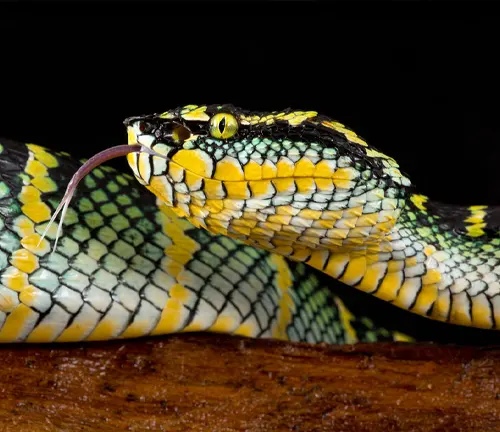
The snake exhibits a stunning combination of green, black, and yellow scales, creating a mesmerizing geometric design along its body. Wagler’s Pit Viper is characterized by a triangular-shaped head, common among venomous snakes, and possesses heat-sensitive pits located between its eyes and nostrils, enabling it to detect prey with remarkable precision.
Despite its venomous nature, this species is generally not aggressive and relies on its cryptic coloration to remain concealed within the lush vegetation. However, when threatened, it can deliver a potent hemotoxic venom through its long, retractable fangs. Enthusiasts and herpetologists alike are drawn to Wagler’s Pit Viper not only for its danger but also for its captivating appearance, making it a subject of fascination and study in the realm of reptile enthusiasts and conservationists.
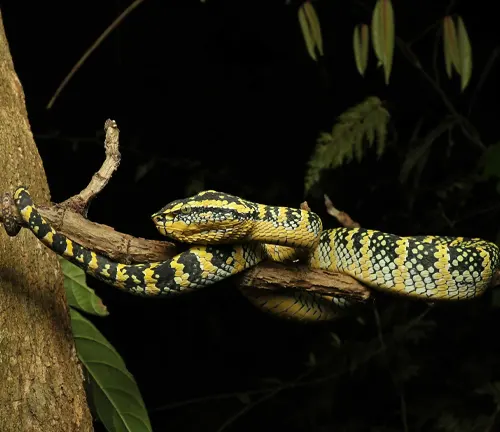
| Attribute | Description |
|---|---|
| Scientific Name | Tropidolaemus wagleri |
| Common Name | Wagler’s Pit Viper |
| Distribution | Southeast Asia (Malaysia, Indonesia, Thailand) |
| Habitat | Rainforests, dense vegetation |
| Coloration | Vibrant combination of green, black, and yellow scales |
| Pattern | Distinctive geometric design |
| Head Shape | Triangular, characteristic of venomous snakes |
| Sensory Pits | Heat-sensitive pits between eyes and nostrils |
| Behavior | Generally non-aggressive, relies on cryptic coloration |
| Venom Type | Hemotoxic |
| Fang Type | Long, retractable |
| Prey Detection | Relies on heat-sensitive pits for precise prey detection |
| Conservation Status | Not Evaluated (IUCN Red List) |
| Significance | Subject of fascination for enthusiasts and researchers |
Venomous or Not Venomous?
The enigma surrounding Wagler’s Pit Viper lies in its venomous nature. While it is true that this species possesses a potent hemotoxic venom, its behavior is generally non-aggressive. Despite the potential danger, these snakes rely on their cryptic coloration to blend seamlessly into their surroundings, avoiding confrontation. Understanding the delicate balance between their venomous capabilities and their preference for a reclusive lifestyle adds depth to the mystery that surrounds Wagler’s Pit Viper.
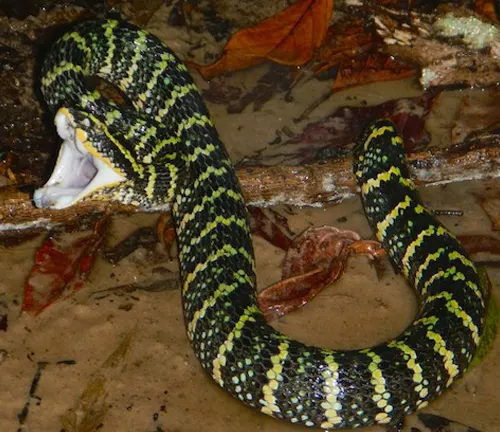
Ecological Importance
Within the intricate web of biodiversity in Southeast Asian rain forests, Wagler’s Pit Viper plays a crucial role in maintaining ecological balance. As an apex predator, its presence helps control the population of small mammals and other reptiles. This interdependence highlights the importance of conserving not just the snake itself but also the fragile ecosystems it inhabits.
Habitat

Wagler’s Pit Viper thrives in the dense vegetation of rain forests, utilising its striking coloration to camouflage effectively. The ability to adapt to such environments underscores the snake’s resilience and specialised adaptations to its habitat, reinforcing the interconnections of flora and fauna in these tropical ecosystems.
Behavior
Despite its venomous capabilities, Wagler’s Pit Viper is known for its generally calm demeanour. This snake prefers to avoid conflict, relying on its camouflage and the secrecy of its surroundings. Understanding the behaviour of this species provides valuable insights into the delicate coexistence of predator and prey in the intricate tapestry of the rain forest.
Art And Culture
Wagler’s Pit Viper has found its way into the art and culture of the regions it inhabits. Its vibrant colors and unique patterns have inspired local artists, becoming a symbol of the region’s rich biodiversity. The snake’s presence in cultural expressions reinforces the significance of wildlife in shaping the identity of communities living alongside these enigmatic creatures.
Survival
Survival in the competitive world of the rain forest demands a suite of adaptive features. Wagler’s Pit Viper’s specialised sensory pits, heat-detecting abilities, and venomous arsenal contribute to its success as a predator. Exploring these survival strategies sheds light on the intricate mechanisms that allow this snake to thrive in its challenging environment.
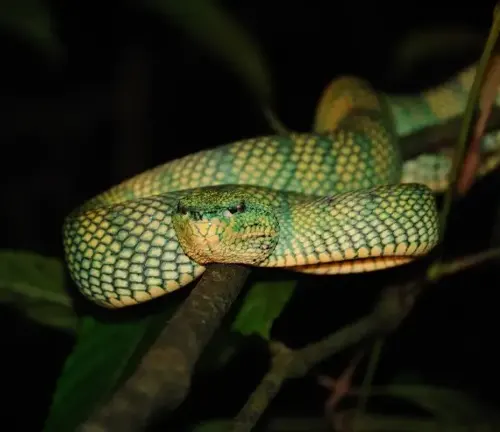
Conservation
While Wagler’s Pit Viper is not currently evaluated on the IUCN Red List, the ongoing threats to its habitat and the broader challenges faced by rainforest ecosystems warrant attention. Conservation efforts must not only focus on protecting the snake but also preserving the delicate balance of the ecosystems it calls home.
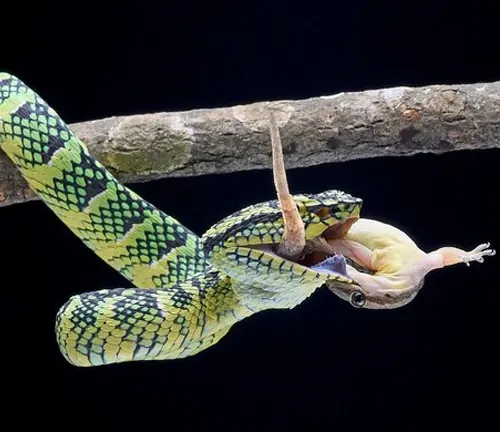
Common Food
Wagler’s Pit Viper primarily preys on small mammals, birds, and other reptiles. Its role as a predator helps regulate the population of these smaller species, contributing to the overall health and balance of the ecosystem.
Benefits
Beyond its role in ecological balance, Wagler’s Pit Viper’s venom has potential benefits for medical research. Studying the components of its venom could provide insights into developing treatments for various health conditions, highlighting the importance of preserving even the most venomous species for the greater good.
Different Species
Tropidolaemus wagleri wagleri
This is the nominate subspecies and represents the typical Wagler’s Pit Viper found in the wild. It exhibits the characteristic vibrant coloration of green, black, and yellow scales.
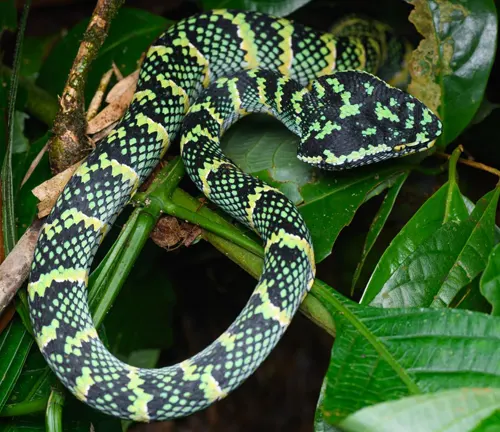

Tropidolaemus wagleri natunensis
Found in the Natuna Islands of Indonesia, this subspecies may have variations in coloration and pattern compared to the nominate subspecies.
Tropidolaemus wagleri sumatranus
Endemic to the island of Sumatra in Indonesia, this subspecies may display variations in color and scale pattern.
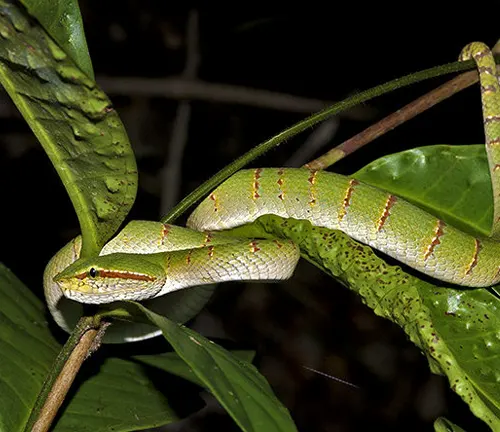
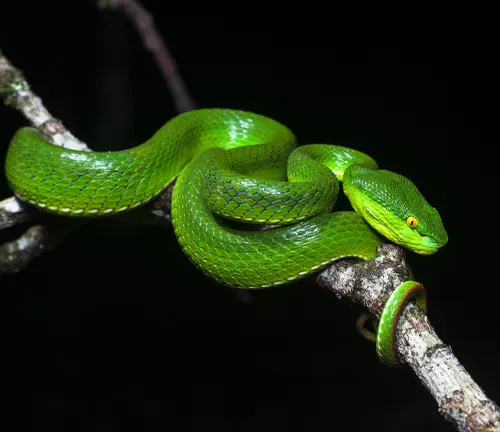
Tropidolaemus wagleri helleri
Known as Heller’s Pit Viper, this subspecies is found in the Mentawai Islands of Indonesia. It may have distinct characteristics that differentiate it from other Wagler’s Pit Viper subspecies.
Tropidolaemus wagleri collaris
This subspecies, also known as the Sumatran Long-tailed Pit Viper, is found in Sumatra. It is recognized for its longer tail compared to other subspecies.
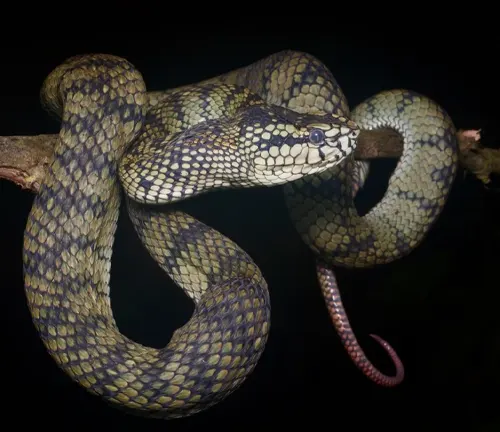
Conclusion
Wagler’s Pit Viper, with its botanical beauty, enigmatic behavior, and ecological significance, emerges as a fascinating creature intricately woven into the fabric of Southeast Asian rain forests. Understanding and appreciating the complexities of this species not only deepens our connection with the natural world but also underscores the urgency of conserving its habitat for future generations./
Frequently Asked Questions (FAQs)
- What is Wagler’s Pit Viper?
Wagler’s Pit Viper, scientifically known as Tropidolaemus wagleri, is a venomous snake species native to Southeast Asia, known for its vibrant coloration and distinctive pattern. - Where is Wagler’s Pit Viper found?
This snake species is found in the rain forests of Malaysia, Indonesia, and Thailand, particularly in dense vegetation. - Is Wagler’s Pit Viper venomous?
Yes, Wagler’s Pit Viper is venomous. It possesses hemotoxic venom, although it is generally not aggressive and relies on camouflage to avoid confrontation. - What is the coloration of Wagler’s Pit Viper?
Wagler’s Pit Viper exhibits a striking combination of green, black, and yellow scales, creating a mesmerising geometric pattern. - How is Wagler’s Pit Viper identified?
The snake is identified by its triangular-shaped head, heat-sensitive pits between its eyes and nostrils, and a distinctive coloration and pattern along its body. - What is the behavior of Wagler’s Pit Viper?
Wagler’s Pit Viper is generally non-aggressive. It relies on its cryptic coloration and prefers to avoid confrontation by blending into its surroundings. - What is the ecological importance of Wagler’s Pit Viper?
Wagler’s Pit Viper plays a crucial role in controlling the population of small mammals and other reptiles, contributing to the ecological balance in its habitat. - Are there different species or subspecies of Wagler’s Pit Viper?
Yes, there are several recognised subspecies of Wagler’s Pit Viper, including Tropidolaemus wagleri wagleri, Tropidolaemus wagleri natunensis, Tropidolaemus wagleri sumatranus, Tropidolaemus wagleri helleri, and Tropidolaemus wagleri collaris. - What is the conservation status of Wagler’s Pit Viper?
As of my last knowledge update in January 2022, Wagler’s Pit Viper is not evaluated on the IUCN Red List. However, conservation efforts are crucial to preserve its habitat and ensure its long-term survival. - What is the significance of Wagler’s Pit Viper in art and culture?
The snake’s vibrant colours and unique patterns have inspired local artists, making it a symbol of the rich biodiversity in the regions it inhabits.



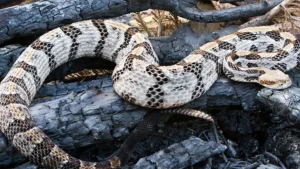
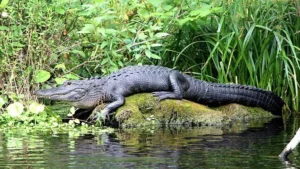

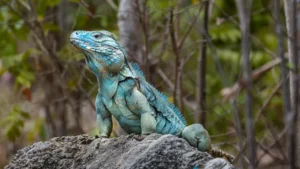



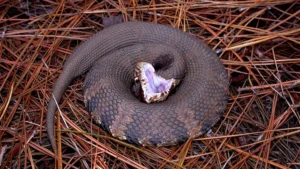
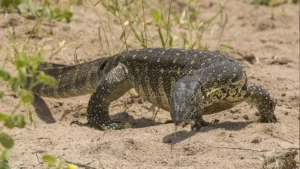

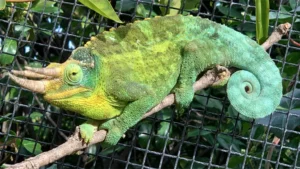
Leave your comment